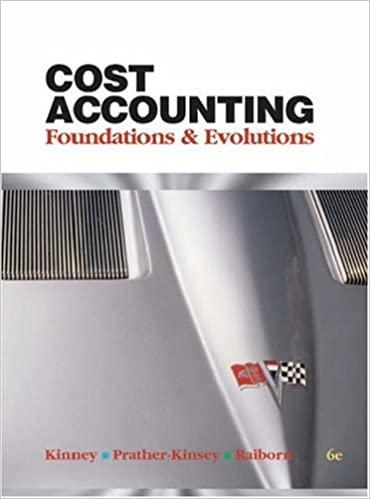A variance is the difference between an actual and a standard cost. Standard costs are recorded in
Question:
A variance is the difference between an actual and a standard cost. Standard costs are recorded in the Work in Process Inventory account, and variances are recorded as either debit (unfavorable) or credit (fa¬ vorable) differences between the standard cost and the actual cost incurred. In general, variances are cal¬ culated as follows for
• direct material:
>- Material Price Variance = (Actual Price X Ac¬ tual Quantity) - (Standard Price X Actual Quantity)
3*- Material Quantity Variance = (Standard Price X Actual Quantity) - (Standard Price X Stan¬ dard Quantity)
>- Total Material Variance = Material Price Vari¬ ance + Material Quantity Variance
• direct labor
>■ Labor Rate Variance = (Actual Price X Ac¬ tual Quantity) - (Standard Price X Actual Quantity)
»- Labor Efficiency Variance = (Standard Price X Actual Quantity) - (Standard Price X Stan¬ dard Quantity)
>- Total Labor Variance = Labor Rate Variance + Labor Efficiency Variance
• variable overhead
»- VOH Spending Variance = Actual VOH — (Standard Price X Actual Quantity)
»- VOH Efficiency Variance = (Standard Price X Actual Quantity) - Applied VOH
>- Total VOH Variance = VOH Spending Vari¬ ance + VOH Efficiency Variance
• fixed overhead
>• FOH Spending Variance = Actual FOH — Budgeted FOH 3- Volume Variance = Budgeted FOH - Ap¬ plied FOH
>- Total FOH Variance = FOH Spending Vari¬ ance + Volume VarianceLO.1
Step by Step Answer:

Cost Accounting Foundations And Evolutions
ISBN: 9780324235012
6th Edition
Authors: Michael R. Kinney, Jenice Prather-Kinsey, Cecily A. Raiborn





